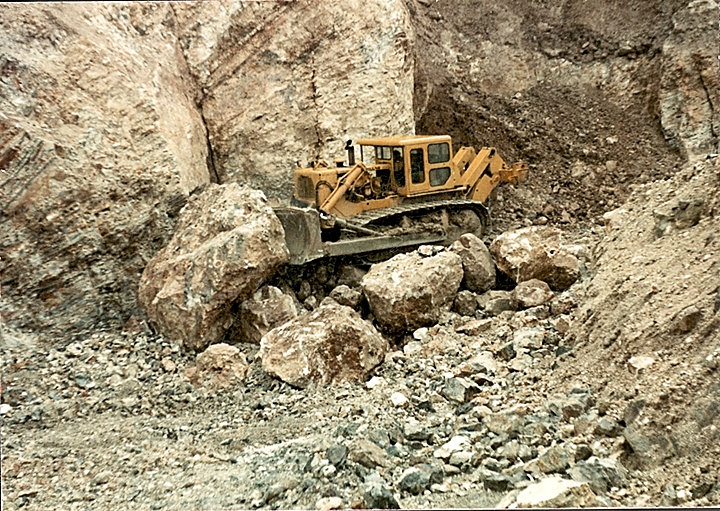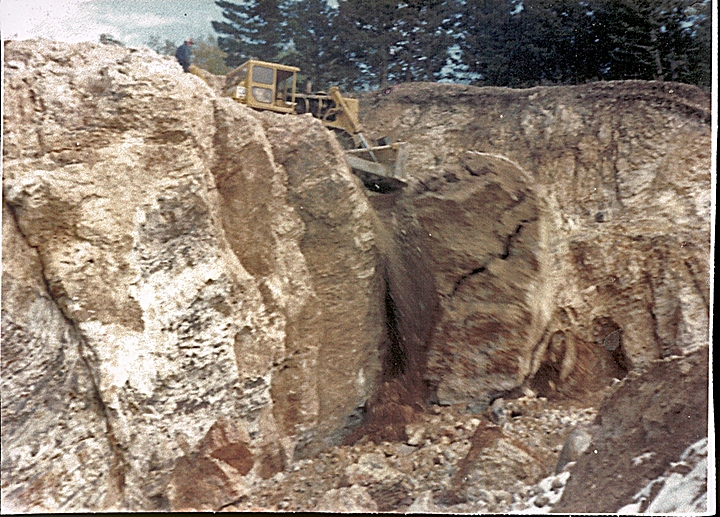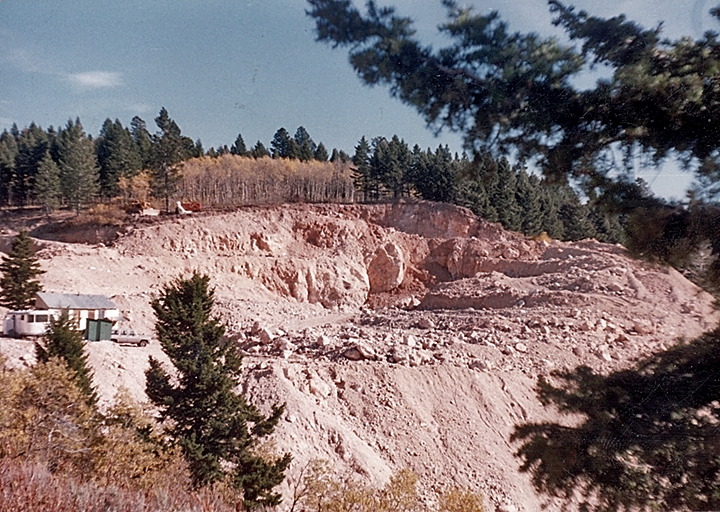Idaho Opal
In Idaho, Opal is the second largest contributor to the total value of gem material produced. The varieties produced include precious (white and pink), yellow, blue, pink, and common. The Spencer Opal Mine, the largest privately owned gem stone producer in the State, is the major producer of Opal.
At Spencer the precious opal occurs as one or more thin layers within common opal partially filling gas cavities within a rhyolite-obsidian flow. About 10% of the material is thick enough to cut into solid gems; the remainder is fashioned into doublets and triplets. The Spencer Mine is the source of pink common opal and pink precious opal. Opal is brittle, heat sensitive, and breaks and scratches easily; additionally, some varieties self- destruct through the loss of water. Even with these drawbacks, opal’s unsurpassed beauty guarantees its status as a premier gemstone. The derivation of its name even adds to its position.
Check out images of our mine below.



Opal Solids
Opal solids are natural stones which have been cut and polished without being tampered with. Opal solids are usually attached to a natural potch backing. The color band has to be thick in order to create an opal solid, which is about 1 rock out of 30 that has a nice thick band that would make a nice solid. Due to the common opal being white, the solids tend to be a whitish color and they do not shine as brightly as a darker piece would.
Opal Solids are extremely beautiful, they are for those folks who want nothing but the best and are not afraid to show it. The opal solids are extremely different from the triplets and tend to have a softer glow.
Opal Triplets
The triplet is what is mainly found in our store and what is seen on our site. The triplet has 3 layers, the bottom layer is black basalt, the middle layer is a very thin piece of opal and the top layer is a quarts cap. The three combinations of these make for an extremely stunning piece. The black back helps to reflect the opals color and makes it radiate its beauty, and the quarts cap helps to magnify it a tad bit but more importantly it helps to protect the opal from damage of everyday use. Quarts is extremely durable, if you had a opal triplet ring on your hand, you could bang it against a hard surface and it would be just fine, and if the cap becomes hazy after years of use, it is extremely easy to rebuff the top surface and turn it to a new clear condition again. The triplet is a perfect combination on beauty and durability.
About Opals
Due to the geo-thermal formation of the mine, the opal is formed in layers most of which are common Opal. The common Opal which is white can be found all over the mine. It is the color or fire as some people call it that we seek when looking for a good finished opal stone. There are two typical types of finished opal stones that you will see, an opal solid and an opal triplet.
Opals In Space
Idaho is an opal-rich area of the Earth, but Earth is not the only planet opals call “home”. In 2008, opals were discovered on Mars. Because opals need water to form, the presence of opals provided evidence that Mars may have had liquid surface water for billions of years.
How the Opal is formed
The primary formation of the mine is a rhyolite and obsidian flow full of gas pockets. The Opal Solution or silica, was a secondary deposit carried by geyser activity. As a result of several eruptions over a period of time, the opal lays in layers. Most of the layers are thin, resulting in some of the most beautiful triplet opal in the world. Occasionally the layer will be thick enough for cutting a solid opal which is an extra bonus for the finder.
The Opal is Hydrothermally deposited inside hollow geodes in successive layers making Spencer Opal ideal for triplets as the thin layers of extremely high quality precious opal are very transparent with great color intensity. Opal doublets, often used in jewelry, are thin slices of precious opal glued onto a matrix material. Such gems are considerably cheaper than solid opals, yet provide the same play of color. Opal doublets are sometimes coated with a thin layer or dome of clear Quartz to make them more resistant to scratches (opal is a relatively soft gem). These are known as triplets.
To make a triplet the opal is ground perfectly flat parallel to the fire layer until the intense fire shows completely across the surface. Then a flat piece of black Basinite or obsidian is epoxied to the flat fire layer. The opal is again ground flat on the opposite side until the fire layer is exposed and shows its greatest intensity against the black background. At this time the opal should be about the thickness of a hair. A Crystal cap is applied with epoxy and the opal is ground to its final shape. Thus is an Idaho Opal Triplet created.

